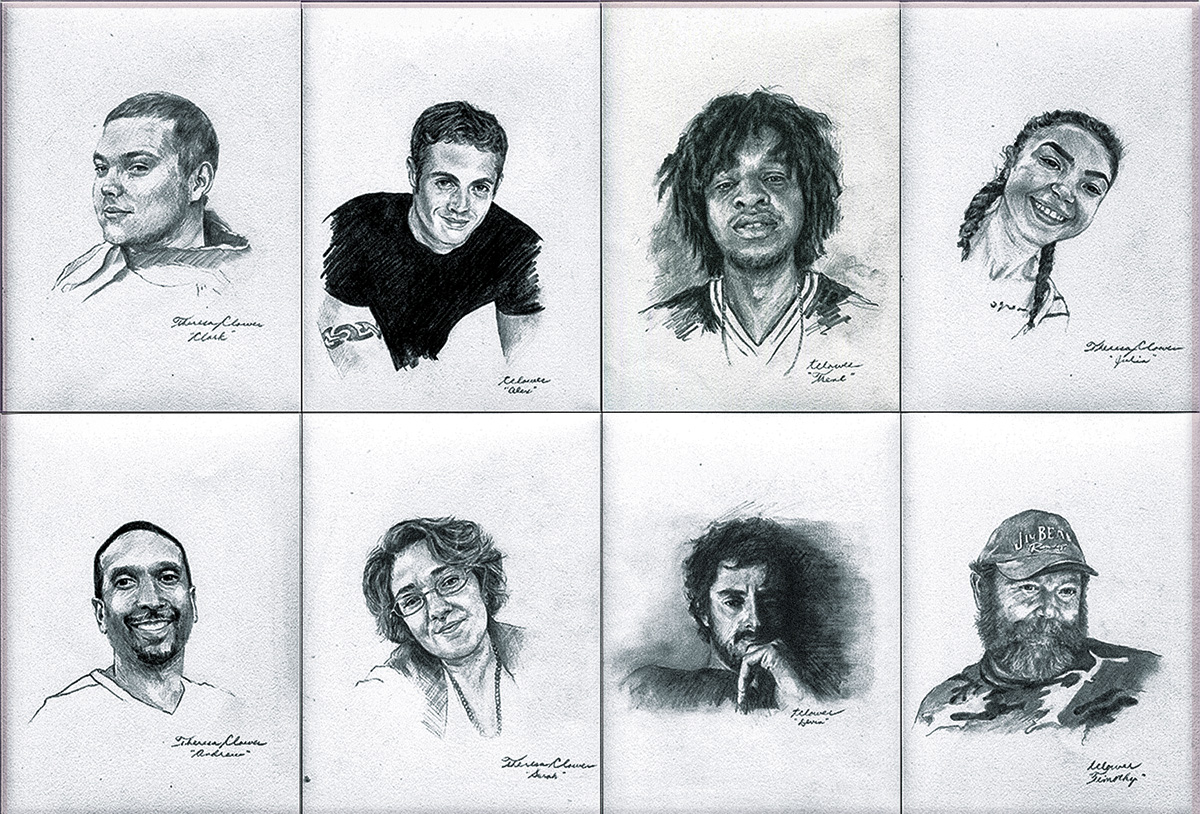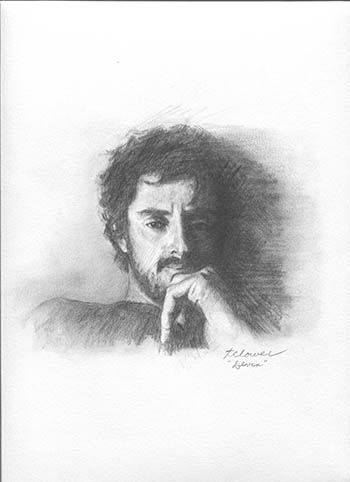Photographic Moment
Changing the Conversation About Drug Addiction

CREDIT: ARTWORK BY THERESA CLOWER; COMPOSITE BY JOSIE ANDERSON, NIDA
The INTO LIGHT exhibit, on display at the NIH Clinical Center until October 1, 2022, aims to reduce the stigma that surrounds the tragedy of drug overdose.
Artwork installed at the NIH Clinical Center is not only beautiful, it’s also very relevant to National Institute on Drug Abuse’s (NIDA’s) research in preventing drug overdoses across the country. NIDA has been collaborating with portraiture artist Theresa Clower for the new exhibit, aiming to reduce the stigma that still surrounds the tragedy of overdose deaths. Clower lost her son to an accidental fentanyl overdose in 2018 and founded the INTO LIGHT Project to use art to reduce the stigma associated with drug use and addiction. Pictured here are eight portraits of people who have died from drug overdose. The art and accompanying stories can be seen in Building 10 to the left of the central elevators in the North Lobby, right outside of the Outpatient Pharmacy until October 1, 2022.
The following is adapted from the project overview displayed at the Clinical Center’s INTO LIGHT Project exhibit.
Before founding the INTO LIGHT Project, Theresa Clower was not a portrait artist. In fact, the portrait that she did of her son, Devin, who died of an accidental fentanyl overdose in 2018, was her first attempt at portraiture. Sitting with Devin and drawing every line of his face helped her to process her grief, and as she signed the final portrait, it was as if she were saying goodbye to her son. It was then that the idea of the INTO LIGHT Project was born.

CREDIT: THERESA CLOWER
Theresa Clower’s portrait of her son Devin, who died of an accidental fentanyl overdose.
Clower views the project as a dynamic practice combining the creative power of art to move us emotionally and bring about social change; in this case, removing the stigma of drug addiction. She notes that the project helps to dispel the myth that only people from certain family backgrounds or those with a moral weakness become substance users. Using graphite as a medium for this project is intentional and a metaphor for the fact that we are all made of light and dark moments. Looking at only the dark parts does not allow us to see the entire picture. To be defined only by one aspect, one part of our personality or experience, does not properly represent who we are.
Assistant Director of the INTO LIGHT Project Barbara Francois is the narrative writer for each story that accompanies Clower’s portraits. “Sharing the stories of the loved ones in this project helps us to know them and provides an opportunity to educate the public about substance-use disorder, not as a moral weakness, but as a brain disorder that needs treatment,” said Francois.
Researchers at the National Institute on Drug Abuse (NIDA) work to advance science on drug use and addiction and apply that knowledge to improve health for people and communities. But NIDA Director Nora Volkow notes that science is only one part of the picture. “Science and art are not often thought of together in tandem. But the intersection of neuroscience to understand how the brain changes due to substance use and addiction and art to remind us of our shared humanity provides a powerful way to help alleviate deep-rooted stigma and inaccurate perceptions,” said Volkow. “While scientific evidence can build a case with evidence and data, the emotional connection experienced through art can be an even stronger argument for changed perspectives on addiction and overdose.”
The INTO LIGHT Project is a national organization with the goal of holding a unique exhibition of 41 portraits of people in each state who have died from drug addiction in that state. When the project was first established in 2019, 41 was the number of people who died every five hours from an overdose. Sadly, that number has only increased. The CDC reported that in 2021 an estimated 107,622 people died from drug overdose in the United States, representing the largest number of overdose deaths ever recorded in a calendar year.
To date, Clower and one other artist have created 287 portraits that have been displayed at exhibits in communities across the nation. The project plans to expand the team to include four to five national artists and encourages people who know of new venues and sponsors throughout the country to reach out. To contact INTO LIGHT Project, visit https://intolightproject.org/.
Artwork is available for sale as part of the Clinical Center Fine Art Program and part of each purchase is donated to the Clinical Center Patient Emergency Fund to benefit patients and their families during times of crisis or financial need.
This page was last updated on Monday, September 19, 2022
